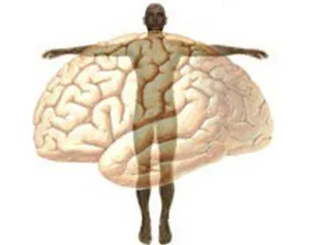Originally posted on October 3, 2021 @ 3:17 PM
Holistic Well Being in Risk Differently
 The separation of Body/Mind is a perennial problem of Philosophy. Known as ‘the Body Mind Problem’ (https://en.wikipedia.org/wiki/Mind%E2%80%93body_problem; https://thereader.mitpress.mit.edu/discovery-mind-body-problem/ ). The ‘problem’ centres on a debate between monism, dualism and holism. It is also a debate that has no solution and so tests the ‘faith’ and wisdom of those who enter into the paradox and, the willingness of people to sustain mystery, uncertainty and ambiguity. Not exactly the place where Safety and Risk wish to be.
The separation of Body/Mind is a perennial problem of Philosophy. Known as ‘the Body Mind Problem’ (https://en.wikipedia.org/wiki/Mind%E2%80%93body_problem; https://thereader.mitpress.mit.edu/discovery-mind-body-problem/ ). The ‘problem’ centres on a debate between monism, dualism and holism. It is also a debate that has no solution and so tests the ‘faith’ and wisdom of those who enter into the paradox and, the willingness of people to sustain mystery, uncertainty and ambiguity. Not exactly the place where Safety and Risk wish to be.
The nature of binary oppositionalism in Safety (https://safetyrisk.net/the-binary-barnacle/) and its ideology of zero is evidence of immaturity and unprofessionalism. This is also evidenced in the theory/practical divide asserted by Safety of practitioner and professional (https://safetyrisk.net/reality-vs-theory-the-binary-divide/ ). Similarly, the brain-centrism of Safety and the body-centrism of well-being discourse. There is no such divide!
All of the research into human embodiment demonstrates that humans are integrated, interconnected, interaffected and intercorporeally whole eg:
- Claxton, Intelligence in the Flesh
- Robinson, Out of Our Minds
- Fuchs, Ecology of The Brain
- Damasio, Descartes’ Error
- Varela, Thompson, Rosch, The Embodied Mind
- Van Der Kolk, The Body Keeps the Score
- Tversky, Mind in Motion
- Meyer, Streeck, Jordan, Intercorporeality
- Durt, Fuchs, Tewes, Embodiment, Enaction, and Culture
- Noe, Out of Our Heads
- Ginot, The Neuropsychology of the Unconscious
When we speak of well-being we need to be thinking: body, brain and soul equals Mind. Nurturing all three is central to well-being. This is why in Social Psychology of Risk (SPoR) we use a lower case ‘m’ to indicate brain and upper case ‘M’ to indicate Mind as ‘whole person’. This is also why a definition of personhood is central to an ethic of risk.
A recent article in Psyche emphasized the importance of Epistemic WellBeing (https://psyche.co/ideas/the-antidote-to-fake-news-is-to-nourish-our-epistemic-wellbeing ). We need to also think of mental health as not just how people think cognitively but rather understanding thinking as interconnected with being, living, consciousness, unconsciousness and becoming. Defining the challenges of mental health and resilience as just a brain activity or cognition activity also doesn’t help. Unless Socialitie and Mentalitie are included in discussion regarding mental health and resilience any strategy is most likely to be ineffective. A holistic approach to Health, Well Being and resilience is best served by a Transdisciplinary approach to personhood.
We have known for some time from Neuroscience that the Heart and Gut serve the body like a brain (https://neurosciencenews.com/ent-gut-second-brain-19393/; https://owlcation.com/stem/your-second-brain-is-in-your-heart ) SPoR is not the only Discipline that adopts the One Brain, Three Minds (https://safetyrisk.net/alarp-sfairp-one-brain-three-minds-and-satisficing/; https://safetyrisk.net/gab-and-robone-brain-three-minds/ ) approach to human personhood (https://journals.sagepub.com/doi/full/10.1177/2158244019837439 ).
This brings us to the importance of defining personhood in tackling risk.
This also has huge implications for how we investigate decisions making, educate others and understand morality. Without an understanding of persons as body, brain and soul it is not likely that whatever change you seek to make in safety, it is not likely to be effective.
Furthermore, we also know that any harm or injury is not just an individual matter but that all suffering is socially situated in culture, community and society, what Jung called The Collective Unconscious (https://www.verywellmind.com/what-is-the-collective-unconscious-2671571). The Collective Unconscious is all those things we share in personhood eg. the quest for meaning, fallibility, mortality, dreaming, breath, food, culture, movement, vision, perception, love etc.
We cannot hope to be ethical/moral in risk and safety without addressing the conscious-unconscious nature of human being. No wonder the AIHS BoK Chapter on Ethics doesn’t discuss personhood, leaving it wide open for dehumanization of persons and the brutalism of zero.
The idea that well-being at work can be separated from all of life-being is one of the silly myths that pervade the flaws of individualism-safety. The foundational nature of human personhood is in social being, Buber’s i-thou. In well-being we need to understand yourself, others and the what, why and how of happens in the hyphen between us.
When we understand persons as interconnected, interaffected and intercorporeal (https://core.ac.uk/download/pdf/228601612.pdf ) and the nature of the conscious-unconscious (individual and collective) then, we tackle the challenges of well-being, enquiry and decision making differently. We envision events differently, being differently and risk differently.
If safety talks ‘difference’ but remains within the same cognitive paradigm, the same materialist-behaviourist- scientist paradigm, it’s not ‘different’.



Do you have any thoughts? Please share them below